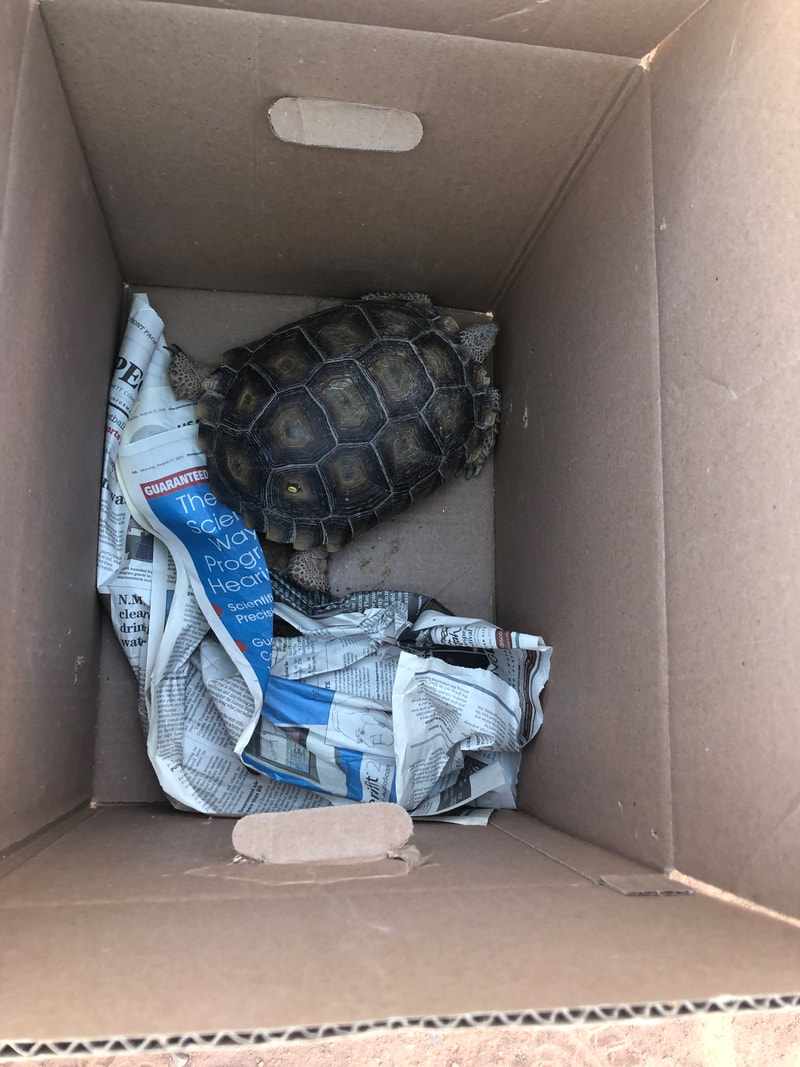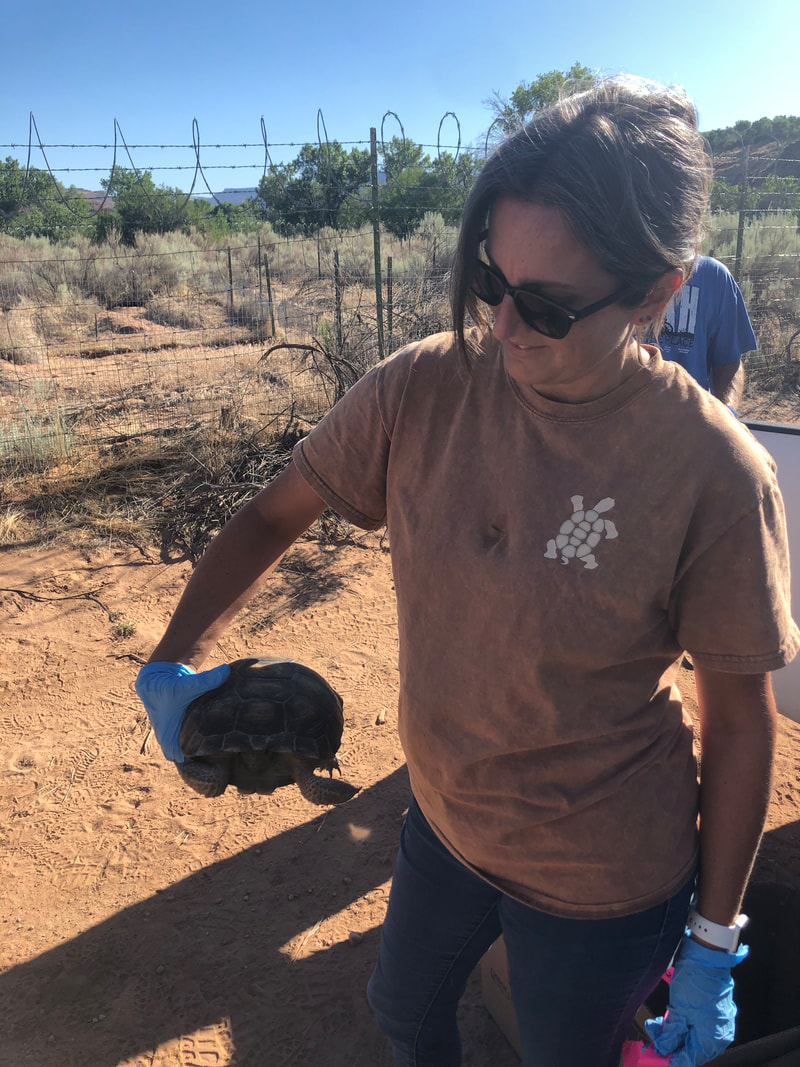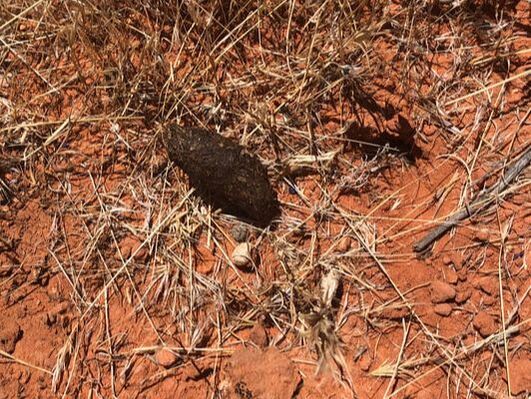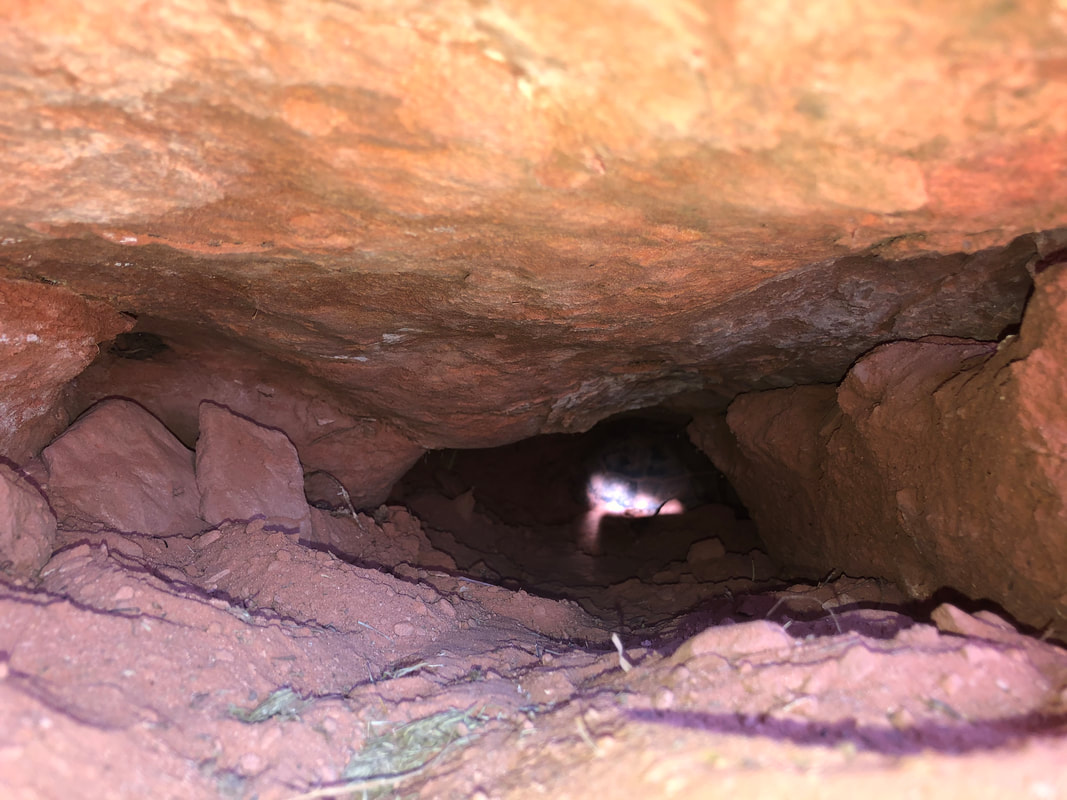|
|
Meet BusterBuster is a Desert Tortoise that was kept as a pet in southern Utah. He was turned over to the Utah Division of Wildlife Resources and the Red Cliffs Desert Reserve because owning a desert tortoise without a permit is illegal. Now, he spends his days in a large, enclosed space where he can live in a natural environment but still be provided water, safety, and food. Employees of the Red Cliffs Desert Reserve visit him regularly to make sure he has what he needs. And give him apple treats. |
Mojave Desert Tortoise
The Desert Tortoise is one of most elusive inhabitants of the desert, spending up to 95% of its life underground. The desert tortoise lives in a variety of habitats from sandy flats to rocky foothills, including alluvial fans, washes and canyons where suitable soils for den construction might be found. It is found from near sea level to around 3,500 feet in elevation. Most desert visitors will not see a tortoise. But if you plan your trip for early spring, and are patient, you may see one of these popular residents of the Mojave Desert.
Desert tortoises may live 50 or more years in the wild and. Their diet consists primarily of wildflowers, grasses, and cacti. A large urinary bladder can store over forty percent of the tortoise's body weight in water, urea, uric acid, and nitrogenous wastes. During periods of sufficient rainfall tortoises drink from temporary rain pools. A common defensive behavior when molested or handled is to empty the bladder, leaving the tortoise at a considerable disadvantage during dry periods. For this reason, desert tortoises should not be handled when encountered in the wild.
(Detailed information found at US Fish and Wildlife Site).
Desert tortoises may live 50 or more years in the wild and. Their diet consists primarily of wildflowers, grasses, and cacti. A large urinary bladder can store over forty percent of the tortoise's body weight in water, urea, uric acid, and nitrogenous wastes. During periods of sufficient rainfall tortoises drink from temporary rain pools. A common defensive behavior when molested or handled is to empty the bladder, leaving the tortoise at a considerable disadvantage during dry periods. For this reason, desert tortoises should not be handled when encountered in the wild.
(Detailed information found at US Fish and Wildlife Site).
Relocation and Adoption
When people expand into desert habitat, the USFWS, the Utah Division of Wildlife Resources, and the Red Cliffs Desert Reserve spring into action. They survey all proposed construction sites to find as many tortoises as possible. These tortoises are then kept in desert pens, such as Goliath's, until they can be adopted and moved to a new suitable home.
They are Here, Even if You Don't See Them
People rarely encounter tortoises in the wild because they spend most of their time in burrows. Finding their scat is a good indication that tortoises are in the area. So is the presence of fresh digging under small sandstone ledges. But still – they are hard to see once they are in their burrows.








